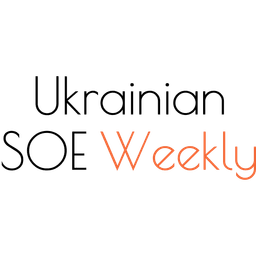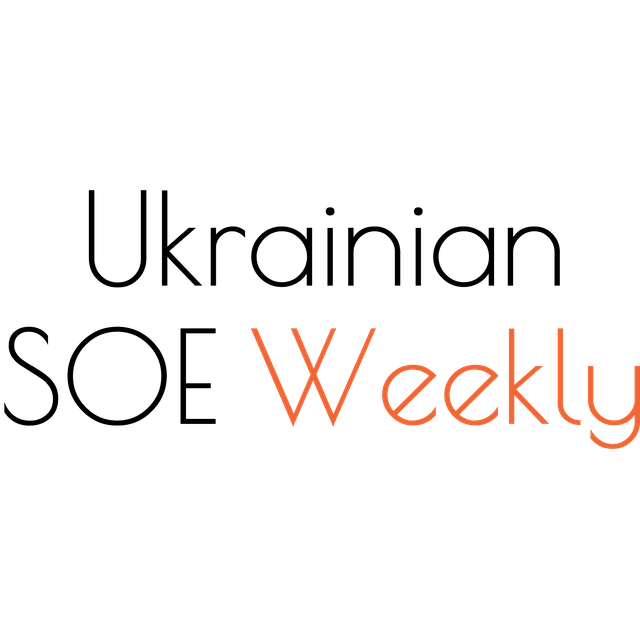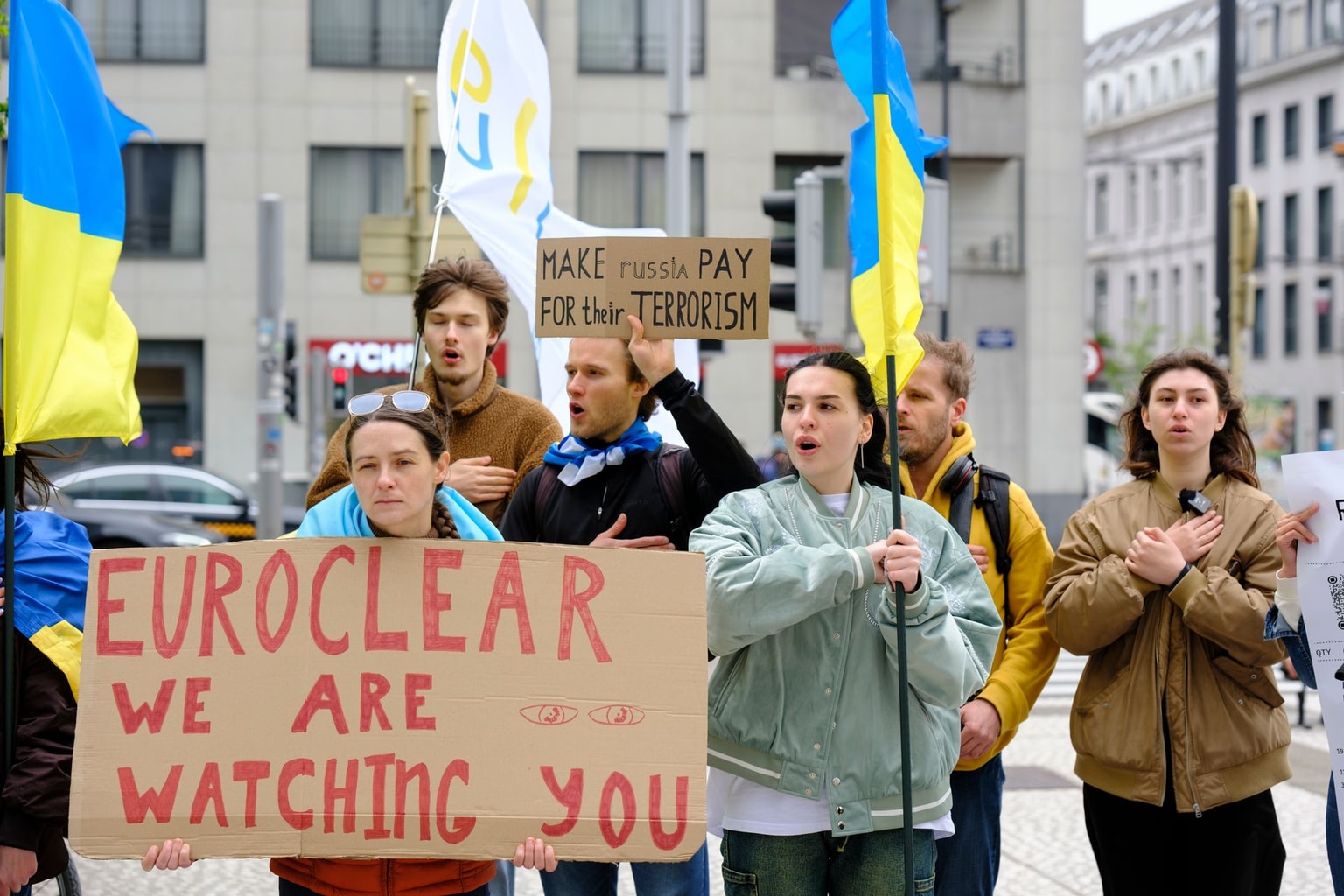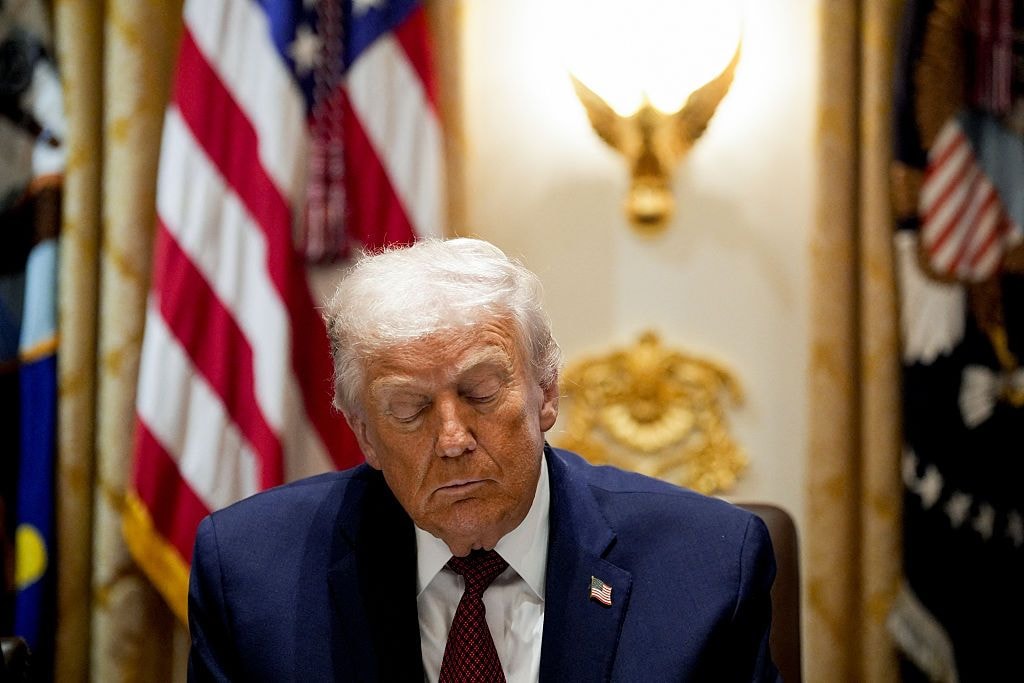Ukrainian State-Owned Enterprises Weekly – Issue 97

Editor’s Note: This is issue 97 of Ukrainian State-Owned Enterprises Weekly, covering events from July 7-14, 2023. The Kyiv Independent is reposting it with permission.
Ukrainian SOE Weekly is an independent weekly digest based on a compilation of the most important news related to state-owned enterprises (SOEs) and state-owned banks in Ukraine. This publication was produced with the financial support of the European Union within the project “Supporting Ukraine in rebuilding and recovery” implemented by the KSE Institute. The contents of this publication are the sole responsibility of the editorial team of the Ukrainian SOE Weekly and do not necessarily reflect the views of the European Union.
Corporate governance of SOEs
IMF updates Ukraine’s conditions to reform SOE corporate governance; another structural benchmark set for the GTSOU. On July 7, the International Monetary Fund (IMF) published an updated Memorandum after its first review of the extended arrangement under the Extended Fund Facility (EFF) for Ukraine, evaluating corporate governance reform at SOEs among other things.
- Ukraine must complete the corporate governance reform of the GTSOU by the end of October 2023. According to the document, Ukrainian authorities committed to transfer the shareholding of the Gas Transmission System Operator of Ukraine (GTSOU) from the Main Gas Pipelines of Ukraine (MGU) to the Ministry of Energy and adopt a new GTSOU charter, developed and agreed with the NEURC in consultation with the Energy Community Secretariat by the end of July 2023 (a structural benchmark, carried over from the original Memorandum, which we discussed in Issue 82).
As we wrote in Issue 92, the Verkhovna Rada plans to adopt a draft law on the merger of the GTSOU and MGU. In the meantime, the draft law was approved in the first reading in the Rada’s session on July 13. It still needs to be adopted in the second reading, and then signed by the President to become effective.
After the law becomes effective, the GTSOU’s charter must be amended to pave the way for a competitive, transparent, and merit-based nomination procedure for the new supervisory board that should be appointed by the end of October 2023 (a new structural benchmark, added after the first review of the IMF programme), IMF said.
As we reported in Issue 92, the GTSOU announced a Prozorro tender to procure the services of an executive search company to find candidates for independent supervisory board members for the GTSOU, with an expected value of Hr 2 million (around 50,000 euros), excluding VAT. According to Prozorro, the bidding took place on June 30, and the final decision is pending.
- The NBU must publish the resilience assessment of banks in wartime by the end of March 2024. According to the IMF, the National Bank of Ukraine (NBU) began the assessment in April 2023 and is preparing for a subsequent independent asset quality review. It will cover the 20 largest banks (including the four state-owned banks) that account for more than 90 percent of the banking system’s assets.
The results of the assessment must be published in March 2024. As we wrote in Issue 82, the previous version of the Memorandum stated that the NBU must complete an asset valuation and solvency assessment of banks by the end of December 2023.
Note that the four state-owned banks – PrivatBank, Oschadbank, Ukreximbank, and Ukrgasbank – are responsible for some 51% of the banking system’s assets. In that respect, this measure mostly covered state-owned banks.
- The strategy for state-owned banks must be updated. The 2020 general strategy for state banks will be reviewed and updated to consider wartime needs and preserve financial stability in cases where additional banks come under state control. (The latter refers to the likely nationalization of Sense Bank; see our Issues 91 and 94 for detail.)
Additionally, the amendments will seek to safeguard bank value, ringfence potential losses, institute sound operational management, assess viability, and identify the future of newly nationalized banks. The roadmap for the privatization of each state bank will be updated.
See our Issue 82 for a discussion of other IMF conditionalities, which have been carried over to the updated IMF Memorandum after the first review. These include the authorities’ commitment to restore regular reporting by SOEs and adopting a draft law bringing the SOE corporate governance framework in line with the OECD Guidelines on Corporate Governance of SOEs (Draft Law No. 5593-d).
Ukrnafta replaces the CEO of Ukrnaftoburinnya. According to state registries, on July 11, Ukrnafta appointed Oleg Malchyk to replace Mykhailo Bakunenko as the new CEO (chair of the executive board) of Ukrnaftoburinnya.
Malchyk was formerly the head of Ukrnafta’s production and services department. According to the media, Bohdan Kukura now took this post. For the past seven years, Kukura held managerial positions in the three largest private oil production companies in Ukraine: DTEK Naftogaz, Ukrnaftoburinnya , and Smart Energy, where he worked until his appointment at Ukrnafta.
According to Liga.net, on July 10, three other companies involved in oil and gas production in the Sakhalin hydrocarbon field, also saw CEO replacements.
Hennadiy Chekhovich became the CEO of East Europe Petroleum LLC (replacing Vitaliy Lupeto); Ihor Ruban replaced Valentyna Khachaturova at Sakhalinske LLC; and Oleg Neziamov replaced Anton Lisnychiy at Sirius-1 LLC. These companies’ assets were seized in a recent criminal case brought against Ukrnaftoburinnya.
In SOE Weekly (Issue 96), we reported that the Anti-Monopoly Committee of Ukraine (AMCU) allowed Ukrnafta to manage the corporate rights of four companies: PrJSC Ukrnaftoburinnya, East Europe Petroleum LLC, Sakhalinske LLC, and Sirius-1 LLC.
According to the registry, Ukrnaftoburinnya’s ownership was split between Ares Systems Ltd (22.49%), Deripon Commercial Ltd (22.49%), JKX Ukraine B.V. (10%), and Ariana Business Limited (22.49%). The media reported that the company is associated with businessmen Ihor Kolomoisky, Pavlo Fuks, and Vitaliy Khomutynnik.
Ukrnaftoburinnya is one of the largest private gas producers in Ukraine, extracting 725.4 million cubic metres in 2021. According to Ekonomichna Pravda (EP), its 2021 net profit was Hr 5.65 billion ($154 million). In 2022, this fell to Hr 3.77 billion ($103 million).
See more on Ukrnaftoburinnya’s case in our Issues 84, 86, 90, 92, and 96.
Banks
Half of all bank branches belong to state-owned banks; Oschadbank has the largest network. According to the most recent data of the National Bank of Ukraine (NBU), state-owned banks had a total of 2,581 branches as of July 1, which makes up 50% of the total number of bank branches in Ukraine. Oschadbank had the largest number of branches among all Ukrainian banks: 1,183.
Below is an overview of the number of state banks’ branches, their share in the total number of bank branches in Ukraine, and their decline since the beginning of Russia’s full-scale invasion.
As of Jan. 1, 2022, the most recent data available before the Russian invasion, Ukrainian banks had a total of 6,685 branches. As of July 1, 2023, there are 5,153 bank branches (a decline of 23%). Since the beginning of 2023, Ukrainian banks have closed a total of 183 branches.
In all four state-owned banks, the number of branches has declined since the full-scale war when it was 3,420.
The percentage of state-owned banks in the total number of bank branches in Ukraine has remained roughly the same as before the full-scale war when it was 51%, suggesting that the decline in the number of branches across other Ukrainian banks was roughly the same.
Defense
Rheinmetall to set up armoured vehicle production in Ukraine within the next 12 weeks. Armin Papperger, the CEO of the German company Rheinmetall, one of the world leaders in the defense industry, made the announcement in an interview to CNN.
Papperger said that the factory would be based in Western Ukraine and protected from Russian attacks. “There are a lot of factories at the moment which are producing military goods [in Ukraine]. It is just another one – and we can protect that also,” he said.
Rheinmetall will also train Ukrainians to maintain the tanks and other armoured vehicles made in the factory, Papperger said in the interview.
Rheinmetall will operate the plant in partnership with Ukroboronprom, which will also own the facility, Papperger explained.
In Issue 88, we reported that Rheinmetall signed an agreement with Ukroboronprom in May 2023 to set up a joint venture to repair tanks in Ukraine.
According to the agreement, the German side will hold 51% of the shares and have management rights. The cooperation will focus on the maintenance and repair of armoured vehicles in Ukraine, while preparations will be made for the construction of tanks. See more in Issue 88.
Rheinmetall AG, headquartered in Düsseldorf, is one of the largest manufacturers of military equipment, weapons, and vehicle components in Europe.
The group consists of five divisions: Vehicle Systems; Weapons and Ammunition; Electronic Solutions; Sensors and Actuators; and Materials and Trade. With some 28,000 employees working in 132 locations worldwide, Rheinmetall’s sales were 6.4 billion euros in 2022.
The group’s sales are distributed geographically as follows: Germany (34.1%), the rest of Europe (30.8%), Asia (18.4%), the Americas (8.2%), and other regions (8.5%).
Rheinmetall has a large institutional investors base (280 institutional owners and shareholders). As of Dec. 31, 69% of its shares were owned by institutional investors and 21% by private shareholders. The largest shareholders were Harris Associates LP (11.6%), Wellington Management Co. LLP (5.08%), Capital Research & Management Co. (4.99%), and BlackRock Fund Advisors (2.35%).
Infrastructure
Ukrzaliznytsia registers a rail cargo company in Poland – the carrier will operate in Europe. According to the Polish company registry, on June 30, Ukrzaliznytsia established Ukrainian Railways Cargo Poland, a transportation firm, in the country.
The company is owned by Ukrzaliznytsia, and its registered address is in Warsaw.
Ukrzaliznytsia’s press release states that the company will operate 1,435- and 1,520-millimetre rolling stock, co-ordinating its work with European operators, cargo owners, and border crossings.
Earlier, in June 2023, Valerii Tkachov, deputy director of Ukrzaliznytsia’s commercial operations department, said that the company would register a freight forwarding company by the end of the year to enter EU markets. Poland would be the new subsidiary’s first market. The company is also considering launching similar services in Slovakia and Hungary, Tkachov added.
As we wrote in SOE Weekly (Issue 76), in February 2023, Oleksandr Kamyshin, Ukrzaliznytsia’s CEO at the time, reported that the rail operator could establish a company to transport cargo in Europe by the end of 2023.
The need for such a company outside Ukraine has been driven by Ukrainian cargo carriers’ difficulties in working with European carriers, Kamyshin said.
In Issue 10, we reported that the then Director of Ukrzaliznytsia’s Cargo Business Unit Irakli Ezugbaia said in December 2020 that the rail operator would establish a separate entity for its cargo business called UZ Cargo during the company’s reform. Ezugbaia said back then that cargo transportation remained the only profitable segment for Ukrzaliznytsia. The immediate task was to ensure a transparent and efficient structure for UZ Cargo.
Based on publicly available information, the plans to unbundle the cargo business in a new entity have never been implemented. In establishing a separate cargo transportation entity outside Ukraine, it may be useful to get back to the idea of unbundling all Ukrzaliznytsia’s cargo operations in a separate entity.
EU publishes a strategy for Ukraine’s rail system transition to the European track. On July 11, the European Commission published the Strategy for the EU integration of the Ukrainian rail system. According to the document, the main challenge is the need to build a new 1,435-millimeter gauge mainline network in Ukraine, which will operate in parallel with the current 1,520-millimeter gauge network.
The 1,435-millimeter Euro gauge will be used for high-speed transport. These include international passenger trains, Intercity rail, and the transport of goods in containers and on platforms.
The existing 1,520-millimeter gauge will serve slower traffic. These include local and regional passenger trains and heavy cargo.
The 1,435-millimeter mainline network will be developed in three stages from west to east:
- The network will first be built out from Mostytska to Lviv and from Chisinau (Moldova) to Ukraine’s border with Romania.
- A line will then link Lviv to Kyiv, while a second corridor in northern Ukraine will link Kyiv with Dorohusk (Poland) and Lviv with Chop.
- The network will then be extended from Kyiv to Kharkiv and Dnipro and expanded in the south. Euro gauge lines will run from Rava-Ruska to Lviv, from Lviv to the border with Romania (via Ivano-Frankivsk and Chernivtsi), and from Odesa to Chisinau.
In the future, the 1,435-millimeter railway network may be extended to cities such as Zaporizhzhia, Kherson, Mykolaiv, Mariupol, Donetsk, Luhansk, and Sevastopol.
The total cost of the three phases is projected at around 11.5 billion euros (700 million euros for the first, 5.9 billion euros for the second, and 4.9 billion euros for the third phase).
Privatization
SPFU to begin privatizing property seized from Russian oligarchs; first auction to be held in August. On July 11, the State Property Fund of Ukraine (SPFU) announced the start of the privatization of assets seized from Russian oligarchs.
On Aug. 10, the SPFU plans to hold a Prozorro auction for the sale of the agricultural company Investagro, which previously belonged to sanctioned Russian oligarch and shareholder of the VSMPO-Avisma titanium corporation Mikhail Shelkov.
The starting price is Hr 55 million ($1.5 million), and the deposit fee to participate in the auction is Hr 11 million, or $301,000 (20% of the starting price, as required by law).
According to the SPFU, Investagro made a net profit of Hr 3.7 million ($101,000) in 2022. In the first half of 2023, it posted a loss of Hr 7 million ($191,000). Investagro’s current accounts payable are Hr 17.2 million ($470,000).
The company owns 25 real estate properties and 12 vehicles, and it leases 204 land plots with a total area of almost 1,326 hectares, the SPFU added.
In SOE Weekly (Issue 74), we reported that on Feb. 3, the High Anti-Corruption Court (HACC) satisfied an appeal by the Ministry of Justice and confiscated the Demurinsky Mining and Processing Plant formerly owned by Shelkov.
In Issue 75, we reported that on Feb. 15, the Security Service of Ukraine (SBU) exposed attempts by sanctioned Russian oligarchs Sergei Chemezov and Mikhail Shelkov to prevent nationalization of assets that both men formerly owned in Ukraine.
In Issue 77, we reported that the Cabinet of Ministers transferred the assets of Shelkov to the SPFU, including Investagro and Demurinsky Mining and Processing Plant.
The SPFU raises 9 million euros from the lease of state property in the first half of 2023. On July 7, the SPFU reported that it signed 760 new asset lease agreements in the first half of 2023.
Together with the earlier lease contracts, the SPFU now operates over 14,000 lease agreements. They generated a total of Hr 381 million ($10 million) in the first six months of 2023.
A total of 776 bidders took part in the lease auctions in the first half of 2023. The sum of the winning prices for all auctions was more than three times the sum of the starting prices, the SPFU said.
The sum of starting prices, the sum of winning prices, and the value of the signed agreements were not reported.
The most active lease auctions were held in Lviv, Zakarpattia, and Volyn oblasts, with 119 auctions held in these regions since the beginning of the year, the SPFU added.
In SOE Weekly (Issue 96), we reported that the SPFU raised Hr 1.82 billion ($50 million) from privatization auctions in the first half of 2023.
The revenue from privatization to the state budget is projected to be Hr 6 billion ($164 million) in 2023.
Confiscation of the aggressor state’s assets, nationalization, and asset seizure
The Ministry of Justice wants to seize the assets of Russian oligarch Molchanov. On July 7, the Ministry of Justice reported that it filed a lawsuit in the High Anti-Corruption Court (HACC) to seize the assets of sanctioned Russian oligarch Andrei Molchanov. These assets include the Russian company LSR Group.
The case also involves AEROC Investment Deutschland GmbH, Ukrainian firm AEROC LLC, and Molchanov himself.
According to the Ministry, LSR Group contributes to Russia’s war effort by paying significant taxes and fees to the state budget of the Russian Federation; actively participates in mortgage programmes to provide housing for Russian war veterans; and invests in the construction of housing for the Russian military.
LSR Group owns two aerated concrete plants in Ukraine and is one of the leaders in this market, Inna Bohatykh, the Head of the Ministry’s Sanctions Policy Department, said.
The court returns the Ukrainian part of the Samara-Western Direction oil pipeline to state ownership. On July 11, the SPFU reported that the Commercial Court of Zhytomyr Oblast granted the SPFU’s claim, recognizing the state ownership of the Ukrainian part of the Samara-Western Direction oil pipeline, the so-called “Medvedchuk pipe.”
Viktor Medvedchuk is a former Ukrainian politician and member of parliament who aggressively advanced pro-Russian narratives in Ukraine. He was arrested by a Ukrainian court shortly after Russia’s full-scale invasion and handed over to Russia in a prisoner exchange later.
According to the SPFU, the court upheld the claim on June 26.
In SOE Weekly (Issue 16), we reported that Ukrtransnafta, a Naftogaz subsidiary, had to protect and maintain the Samara-Western Direction pipeline by the decision of the Higher Anti-Corruption Court (HACC) made in early 2021.
In Issue 24, we reported that the Asset Recovery and Management Agency (ARMA) selected Ukrtransnafta to manage the pipeline in April 2021.
In Issue 31, we reported that in June 2021, the Commercial Court of Zhytomyr Oblast opened a lawsuit filed by the SPFU to return the Samara-Western Direction oil pipeline – a seized asset of the Medvedchuk-affiliated Prykarpatzakhidtrans – to state ownership.











